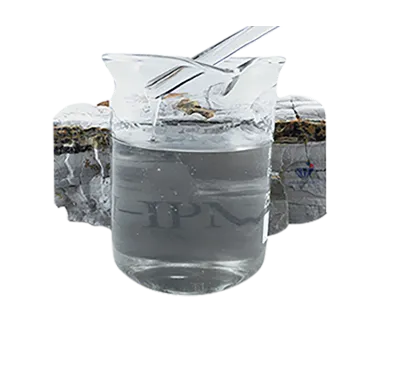
Dec . 14, 2024 11:59 Back to list
hpmc grades viscosity
Understanding HPMC Grades and Their Viscosity Characteristics
Hydroxypropyl Methylcellulose (HPMC) is a versatile cellulose ether widely used in the pharmaceutical, food, and construction industries due to its thickening, gelling, and film-forming properties. One of the critical parameters that define the performance of HPMC in various applications is its viscosity, which varies significantly across different grades. This article aims to discuss the various HPMC grades and their viscosity characteristics, enabling a deeper understanding of how these factors affect their applications.
What is HPMC?
HPMC is derived from cellulose through a series of chemical modifications, primarily the substitution of hydroxyl groups with hydroxypropyl and methoxy groups. The degree of substitution and polymerization influences the properties of HPMC, including its solubility, viscosity, and gel strength. HPMC is non-ionic, which means it is less likely to interact with other ionic compounds, making it suitable for a variety of applications.
HPMC Grades and Viscosity
HPMC is available in various grades, categorized by their viscosity levels when prepared as a 2% aqueous solution. Common HPMC grades include HPMC 100, HPMC 150, HPMC 200, and HPMC 400, among others. Each grade has a specific viscosity range, which is a crucial factor when selecting HPMC for a particular application.
1. Low Viscosity Grades (HPMC 100, HPMC 150) Low viscosity HPMC grades typically exhibit viscosities between 1000 to 1500 mPas. These grades are often used in applications requiring a smoother texture and lower thickness, such as in food products like sauces and dressings. They provide excellent flow properties, making them ideal for use in applications like liquid detergents and personal care products.
2. Medium Viscosity Grades (HPMC 200, HPMC 300) Medium viscosity grades offer viscosities in the range of 2000 to 3000 mPas. These grades are characterized by their balanced thickening properties, making them suitable for pharmaceutical formulations such as drug delivery systems and controlled release matrices. They are also widely used in the construction industry as additives in cement and mortar to improve workability.
3. High Viscosity Grades (HPMC 400 and above) High viscosity grades possess viscosities exceeding 4000 mPas, making them ideal for applications requiring significant thickening and gelling properties. These grades are commonly used in the formulation of adhesives, coatings, and in the formulation of highly viscous gels, such as those used in personal care products like lotions and creams.
hpmc grades viscosity

Factors Influencing Viscosity
The viscosity of HPMC is influenced by several factors, including
- Molecular Weight Generally, as the molecular weight of HPMC increases, its viscosity also increases. This relationship is due to the chain length of the polymer, which affects its ability to entangle and create a thicker solution.
- Degree of Substitution (DS) The degree of substitution, which refers to the average number of hydroxyl groups replaced by hydroxypropyl and methoxy groups, also plays a significant role in viscosity. Higher degrees of substitution often lead to lower viscosity due to increased solubility and reduced intermolecular interactions.
- Temperature Viscosity is temperature-dependent. Typically, as temperature increases, the viscosity of HPMC solutions decreases. This behavior is crucial in processing applications where temperature management is essential.
- Concentration The concentration of HPMC in solution is another key factor influencing viscosity. Higher concentrations generally lead to higher viscosities due to increased polymer interactions and entanglements.
Applications of HPMC Based on Viscosity
The variation in viscosity among HPMC grades allows for tailored solutions for specific applications. In the pharmaceutical sector, low viscosity HPMC is favored for oral suspensions, while high viscosity grades are used for sustained-release formulations. In the construction industry, medium to high viscosity grades enhance the workability and adhesion properties of building materials.
In conclusion, understanding the different grades of HPMC and their viscosity characteristics is vital for selecting the right product for any given application. The interplay of molecular weight, degree of substitution, temperature, and concentration can greatly influence the performance of HPMC-based formulations. As industries continue to innovate, the demand for specialized HPMC grades that meet specific viscosity requirements will likely continue to grow, further highlighting the importance of this critical polymer.
-
Versatile Hpmc Uses in Different Industries
NewsJun.19,2025
-
Redispersible Powder's Role in Enhancing Durability of Construction Products
NewsJun.19,2025
-
Hydroxyethyl Cellulose Applications Driving Green Industrial Processes
NewsJun.19,2025
-
Exploring Different Redispersible Polymer Powder
NewsJun.19,2025
-
Choosing the Right Mortar Bonding Agent
NewsJun.19,2025
-
Applications and Significance of China Hpmc in Modern Industries
NewsJun.19,2025







